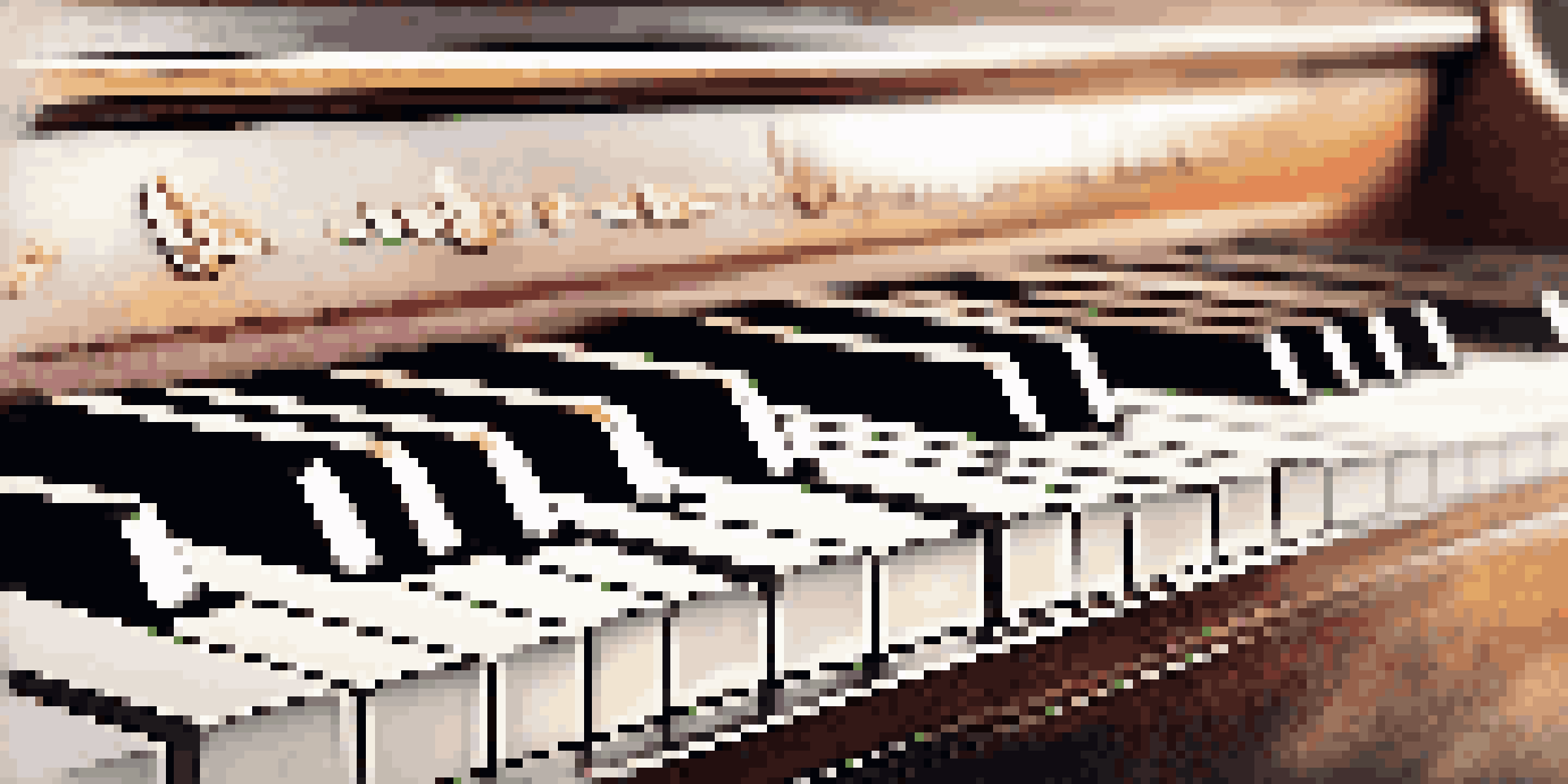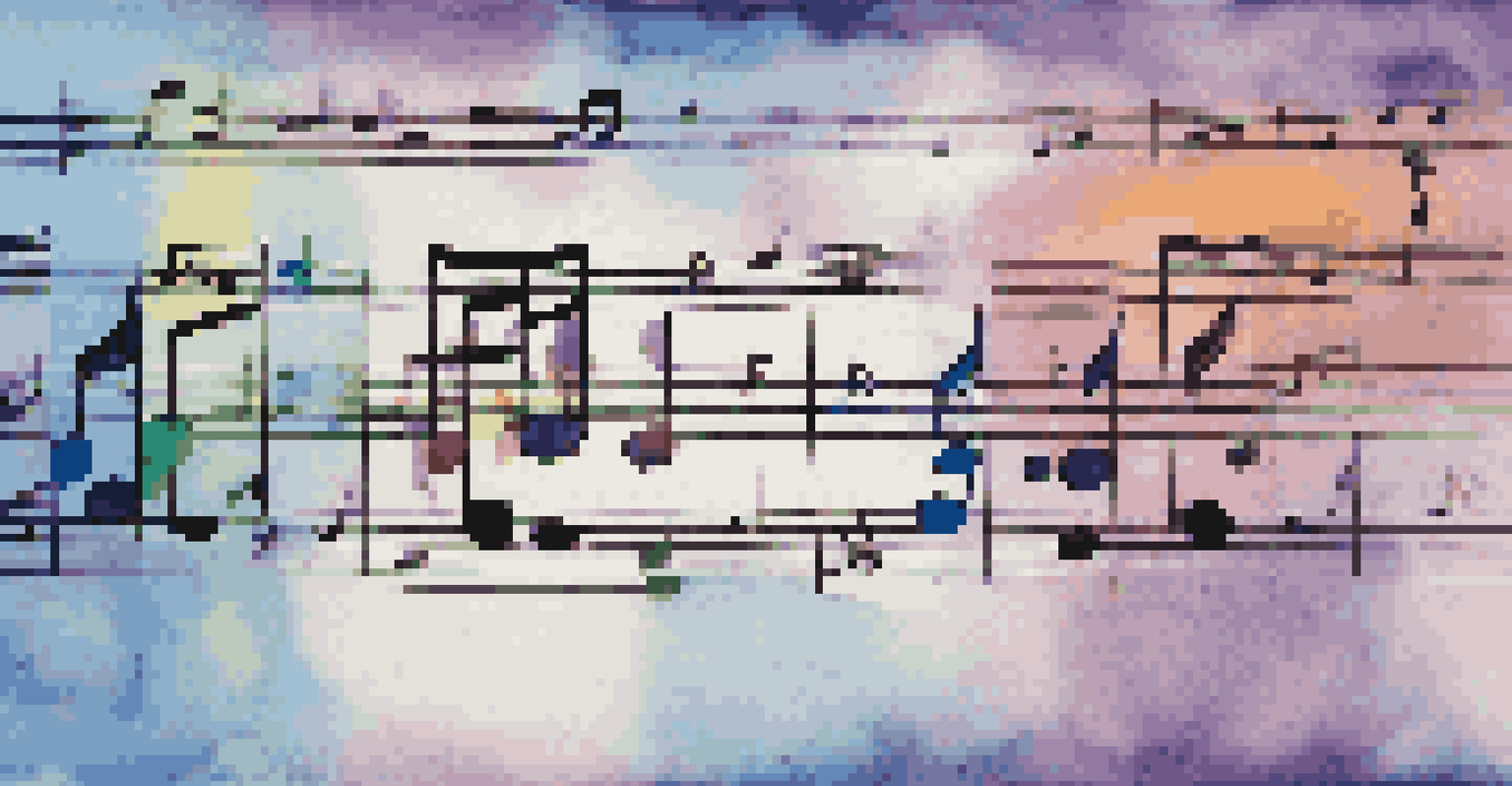Understanding Chord Voicings: Techniques for Pianists

What Are Chord Voicings and Why They Matter
Chord voicings refer to the different ways you can play a chord on the piano. Rather than sticking to the basic triad, exploring voicings allows for richer and more varied sound textures. This exploration is crucial for pianists looking to enhance their musical expression and creativity.
Music is the shorthand of emotion.
Imagine playing the same song over and over but each time with a slightly different flavor. That's the beauty of chord voicings! They help you convey different emotions and nuances in your music, making your performances captivating.
In essence, mastering chord voicings is like learning to speak a language fluently. The more vocabulary you have, the more expressive and nuanced your communication becomes, making your music truly come alive.
Basic Chord Voicings: Major and Minor
At the core of chord voicings are the major and minor triads. A major triad consists of the root, major third, and perfect fifth, while a minor triad has the root, minor third, and perfect fifth. Understanding these basic structures is essential for building more complex voicings.

Think of a major chord as a bright sunny day, while a minor chord feels more like a moody afternoon. These emotional qualities can influence the mood of your piece significantly, so it's vital to grasp their differences.
Explore Chord Voicings for Expression
Chord voicings allow pianists to convey different emotions and enhance musical creativity by varying how chords are played.
Once you're comfortable with these basic triads, you can start experimenting with their voicings. For example, try playing the notes in different octaves or adding additional tones to create a fuller sound. This experimentation is where the magic begins!
Inversions: Adding Variety to Your Playing
Inversions are a game-changer when it comes to chord voicings. By rearranging the notes of a chord, you can create different textures and smoother transitions between chords. For instance, playing a C major chord in its first inversion (E-G-C) brings a fresh sound compared to the root position (C-E-G).
The beautiful thing about learning is that no one can take it away from you.
Imagine climbing a staircase; each step changes your perspective. Inversions do the same for your chords, allowing you to explore new musical landscapes. They can help maintain a sense of movement in your playing, making it more dynamic.
As you practice inversions, you'll find that some work better in certain musical contexts than others. Listen closely to how each inversion affects the overall feel of the piece, and soon you'll be able to intuitively choose the right one.
Extended Chords: Adding Depth and Emotion
Extended chords go beyond the typical triads and include additional notes like the seventh, ninth, or even thirteenth. These chords add depth and complexity to your music, giving it a more sophisticated sound. For example, a Cmaj7 chord (C-E-G-B) introduces a lush quality that's perfect for jazz.
Think of extended chords as adding spices to a dish. While the basic triads are like salt and pepper, extended chords can bring out rich flavors that make your music stand out. They can evoke different emotions and create a more vibrant sound palette.
Inversions Enhance Musical Texture
Utilizing inversions rearranges chord notes to create smoother transitions and varied textures in your playing.
As you incorporate extended chords into your playing, pay attention to how they interact with the melody and other harmonies. This awareness will help you create a more cohesive musical experience that resonates with your audience.
Voicing Techniques: Open vs. Closed Voicings
Voicing techniques can be categorized into open and closed voicings. Closed voicings keep all the notes of the chord close together, while open voicings spread the notes out over a wider range. Each technique has its own unique sound and can drastically change the feel of a piece.
For instance, closed voicings might feel tighter and more structured, akin to a well-tailored suit, whereas open voicings could feel more relaxed and airy, like a flowing dress. Choosing between these two can set the mood and style of your music.
Experimenting with both voicing techniques will allow you to find a balance that suits your musical style. Try playing the same chord in both open and closed voicings to see how the feel of the music changes, and discover which resonates with you.
Voice Leading: Creating Smooth Transitions
Voice leading is the technique of moving from one chord to another while minimizing the distance the individual notes travel. This practice is crucial for achieving smooth transitions between chords, which can enhance the overall flow of your music. Think of it as connecting the dots in a drawing — the smoother the lines, the more cohesive the picture.
By focusing on voice leading, you can create more musical phrases that feel natural and effortless. For example, if you're moving from a C chord to an F chord, you can keep common tones like C and E, which makes the transition smoother.
Practice Techniques for Mastery
Incorporating techniques like voice leading and experimenting with voicings can significantly improve the flow and depth of your music.
Incorporating good voice leading into your practice can significantly improve your playing. It encourages thoughtful movement between chords, allowing your music to breathe and flow beautifully, captivating your audience with every note.
Putting It All Together: Practice Tips
Now that you understand the various aspects of chord voicings, it's time to put theory into practice. Start slowly by choosing a song you love and apply different voicings, inversions, and techniques. This experimentation can be both fun and enlightening, revealing new facets of pieces you thought you knew well.
Consider keeping a practice journal to track your progress and insights as you work on chord voicings. Reflecting on what works and what doesn’t can deepen your understanding and help you become more intentional in your playing.

Remember, the journey of mastering chord voicings is ongoing. Be patient with yourself, and don’t hesitate to explore new styles and genres. The more you practice, the more your unique musical voice will emerge, enriching both your playing and your enjoyment of music.